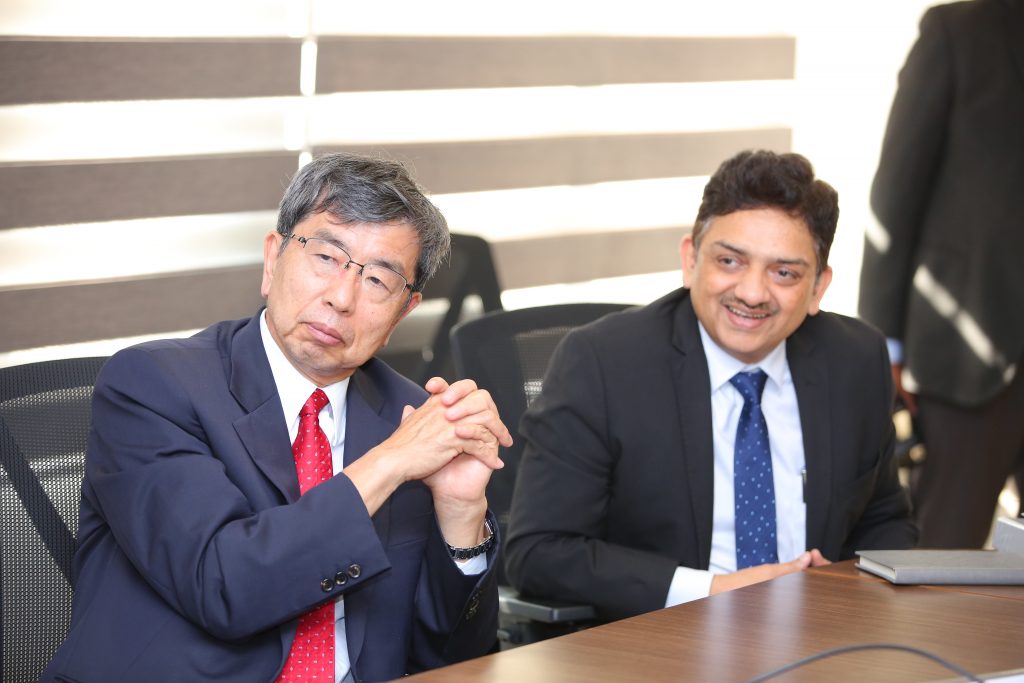President, Asian Development Bank (ADB) Mr. Takehiko Nakao visited National Capital Region Transport Corporation (NCRTC) corporate office in New Delhi today on 28th August 2019. NCRTC Team briefed ADB President and the ADB delegates about Regional Rapid Transit System (RRTS) project being implemented in National Capital Region. The presentation made to President included details of India’s first regional rail project Delhi-Ghaziabad-Meerut RRTS corridor, various steps taken for early implementation, risk mitigation measures and green practices.
Mr. Nakao was also briefed about how NCRTC is leveraging technology for the execution of the project. ADB president experienced the use of Building Information Modeling (BIM) using virtual reality. VR is immersive visualization techniques which is helping NCRTC and its construction partners to have a better understanding of the project and helps in early identification and rectification of issues which may have been missed while designing the project on paper. Mr. Nakao was also informed about the ongoing construction work and the speed in which civil construction work is in progress.
He was impressed with progress made on the construction front and effective use of technology in the project. He appreciated the institutional mechanism developed for bringing State Governments and Government of India together with the underlying concept of cooperative federalism. Praising the RRTS project, Mr Nakao said that it is a unique mobility model which can be replicated in other cities of India as well as in other countries of the world.
The RRTS will provide a mobility solution that will lead to balanced and sustainable socio economic development and address urban issues of vehicular pollution and severe congestion. RRTS through polycentric development will usher in a new era of growth for industries bringing people closer to opportunities.
The ADB is funding Delhi-Ghaziabad-Meerut RRTS corridor. The construction work is in full swing at the 17-km long priority section between Duhai and Sahibabad of the corridor. While the priority section is expected to become operational by March 2023, the full corridor is scheduled to open in 2025.







